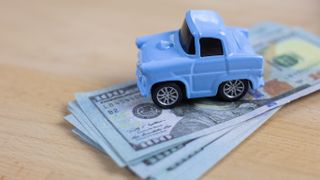Indeed, some 43% of motorists (opens in new tab) say car repairs have driven them into debt, and seeing as you’re unlikely to ever find a car that’s 100% reliable, all you can do is prepare yourself as best you can for when things do go wrong. Of course, the best roadside assistance services (opens in new tab) can usually take care of your immediate plight, but it’s what comes after that has the potential to cost you dear, and makes planning for how you’d cover car repair costs an absolute must.
Warranty cover
Probably the only positive to be taken from a newer car breaking down is that there’s a good chance your car is still covered by the manufacturer’s warranty. And if it isn’t, hopefully you’re among the more conscientious motorists that like to arrange one of the best extended car warranties (opens in new tab) to protect against motor repairs. Whether you’ll escape a costly bill will depend on what an extended car warranty usually covers (opens in new tab), and the nature of your breakdown. If it’s parts related, and due to general wear and tear, then you might be in luck, but you’ll need to check your cover and the small print first. But if you’ve been involved in an accident, a warranty won’t usually cover it, although the best auto insurance (opens in new tab) might.
Put savings aside
Some wise people that know suggest that the best way to avoid being blindsided by car repair costs is to have savings specifically set aside to pay for them. By simply opening an account with an online bank (opens in new tab), and setting up a transfer from your checking account each month, you could soon have an emergency fund to fall back on. Even if what you can afford to save is small, something is better than nothing - indeed, a recent survey found that having as little as $100 in savings (opens in new tab) can help people avoid the need to borrow.
Consider a credit card
If you don’t have money set aside, and car repair costs strike, maybe you’ll need to borrow to settle your repair bill. Using a credit card is one solution, and a reasonable one too, if you’re confident that you’ll be able to quickly pay off what you put on the card. However, if what you borrow is unlikely to be repaid in the near future, more thought is undoubtedly required, particularly as unpaid credit card debt can attract high rates of interest, and damage your credit score if payments aren’t met.
Use a personal loan
If you’re unfortunate enough to be hit by extremely high car repair costs, that are way beyond your immediate means, a personal loan (opens in new tab) might be where you must turn. Interest rates on a loan are usually lower than with a credit card, and the terms should offer more flexibility too. Indeed, some loans can be paid back over a period as long as 10 years, and you’ll know exactly what you need to pay off each month as well. Checking your credit rating, and boosting your credit score (opens in new tab), should open the door to the lowest APRs.
Payment plans
Knowing how costly some car repairs can be, many mechanics now offer 0% interest finance programs giving you the option to pay off your auto repair bill in monthly instalments. These point-of-sale finance options are usually similar to those which can be used to “buy now, pay later” for big ticket purchases. As such, these payment plans will offer similar advantages and disadvantages too, more of which you can learn about here (opens in new tab).
A new car?
If you’re regularly ploughing more money into car repairs than would seem sensible, perhaps it’s time to think about a new car. After all, what you spend on a major repair bill could easily equate to a down payment for a new car, that would hopefully be less susceptible to letting you down too. The rates on the best auto loans (opens in new tab) are competitive right now as well, assuming your wider finances allow for such a large purchase.
